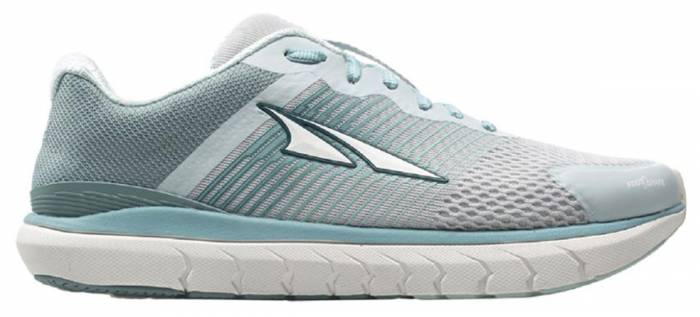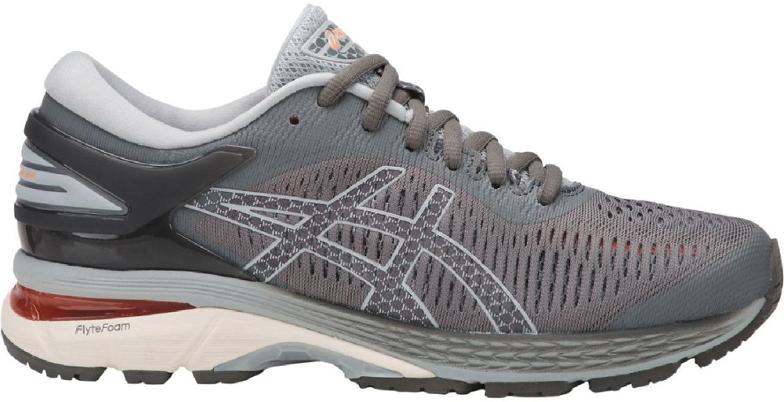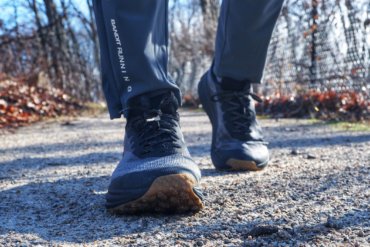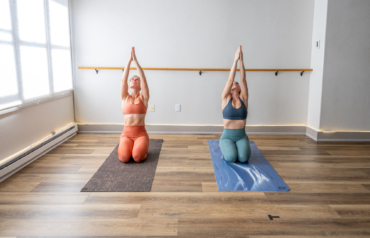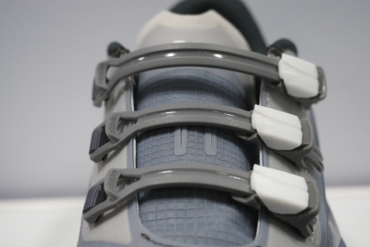Whether training for a marathon or logging a few easy miles in the neighborhood, we found the best running shoes for women in 2020.
Finding the right running shoes can be a pain. With so many to choose from, it can be hard to narrow them all down. Don’t worry, though — we’ve spent months researching and testing in order to find the best running shoes for women.
Testing included intense mountain runs, moderate trail runs, adventurous day hikes, runs over cement and pavement, plenty of treadmill miles, and a few fitness classes.
We’ve divided the list into useful categories to help you find the best fit. And if you’re not sure how to choose, check out our handy buyer’s guide at the end of this article.
Note that this article specifically covers the best road running shoes for women. If you’re looking for something else, we have separate guides for the best trail running shoes for women, the best running shoes for men, and the best marathon running shoes.
The Best Running Shoes for Women in 2020
Best Overall: Brooks Glycerin 18 ($150)
These runners deliver comfort and support on both short and long runs. They fit well from the first wear and had no problems with rubbing or blisters.
The toebox is wide enough for toes to splay (though not as wide as brands like Altra that are known for that). And the DNA LOFT midsole gave just enough cushion to keep feet happy without becoming overly soft.
At 18 ounces per pair, these aren’t the lightest shoes on the market. But they’re in the normal range, and we never felt our feet being weighed down.
Basically, if you’re looking for strong-performing, sturdy, do-all running shoes, these are a top pick. There are others on the list that come in lighter or faster, but the Brooks Glycerin is a great everyday option and certainly one of the best running shoes for women out there.
Weight (per pair): 18 oz.
Drop: 10 mm
Best for: Everyday road runs, maximum comfort, and performance
Best Neutral Zero-Drop Running Shoe: Topo Athletic Magnifly 3 ($120)
An all-around workhorse, the Topo Magnifly 3 provides mild stability and is suitable for long runs, sprint work, and leisurely walks. The dual-density midsole is firm on the bottom and soft on the top for a snappy, responsive run. The zero drop aims to support a natural stride and keep feet in touch with the ground.
We’ve used these on long runs, and they had just enough cushion to keep us comfortable. But depending on the runner, you may want something with more padding when logging mega miles.
We like the light feel, and our feet never got too hot, even in the humid South. All in all, these are a great shoe for all manner of road running.
Weight (per pair): 16.6 oz.
Drop: Zero
Best for: Neutral runners
Best Cushioning: HOKA ONE ONE Clifton 6 ($130)

For those times when you need some extra cushion, the HOKA ONE ONE Clifton 6 is your answer. It’s no surprise this is a majorly popular shoe among marathoners. The full-compression EVA midsoles provide maximum cushioning and comfort for long days pounding the pavement. And while the iconic oversized sole (with small 5mm heel-toe drop) may take a while to get used to, the pillowy comfort is worth it for a refreshing change.
The upper has an embroidered design that improves lockdown without adding any weight. Even if it doesn’t become your all-the-time running shoe, it’s a great option for really long runs and post-race padding. One GearJunkie contributor loves having these in her quiver as a go-to recovery shoe, and we know many marathon runners, long-distance walkers, and nurses who swear by them.
Weight (per pair): 14.7 oz.
Drop: 5 mm
Best for: Long runs when you need extra cushion
Interval Training: On Running Cloud X ($140)
This shoe not only looks good, but it works great too. This is due in large part to the pillowy, donut-like pods made from a soft foam that provides efficient energy return.
At a little over 6 ounces per shoe, the Cloud X is incredibly light. And with lightweight, breathable materials, the upper feels like a glove. Whether heading out for a morning of hill repeats or maximizing your time interval training, this shoe can do it all.
The flexible and lightweight design is meant to keep heel strikes quick and efficient. And while we can’t claim that will always happen, we did feel extra nimble in the Cloud X.
Weight (per pair): 13.2 oz.
Drop: 6 mm
Best for: Interval and cross-training
Light and Fast Recovery: Brooks Hyperion Tempo ($150)
New for 2020, this energy-saving shoe packs a lot into a lightweight package. The new DNA FLASH nitrogen-infused midsole is incredibly light while still providing soft cushioning and a responsive ride. Brooks isn’t the first to use nitrogen-infused midsoles, but it’s exciting to see this fan-favorite brand try something new.
The woven upper is light and breathable, making it perfect for hot summer runs. And although it dries quickly, it’s not great in wet weather, as we found the sole surprisingly slippery. It’s also worth noting that the foam hardens up considerably on below-freezing winter days, limiting the comfort.
But for fast summer training runs, we’re big fans of the Hyperion Tempo. It allowed us to run hard several days in a row without paying the consequences later. And if you’re looking to set a new PR come race day, check out the Tempo’s companion shoe, the Hyperion Elite. These shoes were specifically designed in concert with athletes who wanted to run harder and faster.
Weight (per pair): 13.4 oz.
Drop: 8 mm
Best for: Fast, snappy training runs
Best Zero-Drop Stability Shoe: Altra Provision 4 ($130)
Altra has been at the front of the zero-drop revolution. With a wide, foot-shaped toebox and neutral drop, the shoes encourage a more natural midfoot placement (which reputedly leads to a stronger stride and less injury).
The fourth version of the Provision was revamped this year to “enlighten the runner.” Step into the shoe, and you immediately notice the pebbly insole, which feels like stepping into a foot massage. It’s super comfortable and wakes up the feet.
But the biggest lift this year was adding a dynamic “harness” that wraps up from the midsole to the laces. Tying into the Provisions, the strap effectively supports the arch from underneath, flexing and supporting the foot as it needs.
The midsole is soft and provides plenty of cushion. And for the zero-curious, this is a great shoe for newbies to step into zero drop.
Weight (per pair): 14.8 oz.
Drop: Zero
Best for: Stability; middle-distance trainer
Best for Supination: Saucony Ride ISO 2 ($91 on Sale)
We hear plenty about overpronation and stability shoes, but the Ride ISO 2 delivers for those that deal with underpronation or supination. It does this by utilizing two types of foam: a softer topsole that sits closer to the foot and a tougher PWRfoam that dampens impact. Together, these provide extra support, though it’s worth noting that neutral testers also enjoyed this shoe.
We also really liked the soft upper and ISOFIT design. Made from a stretchable mesh, it easily molds to the foot and allows for a snug — but not tight — fit. This isn’t the lightest or wildest shoe out there, but if you’re looking for a comfortable, durable, solid-performing, everyday running shoe, it’s worth considering the Saucony Ride ISO 2.
From short runs to high-mileage days, our testers regularly reached for this shoe.
Weight (per pair): 17.6 oz.
Drop: 8 mm
Best for: Everyday runs, supinators and neutral runners alike
Best for Stability: ASICS GEL-Kayano 26 ($101 on Sale)
Designed with stabilization in mind, the GEL-Kayano 26 is a favorite among both long-distance runners and casual joggers. These shoes manage to provide adequate cushioning without feeling like you’re on stilts.
For long runs, we were happy with how the FlyteFoam offered plenty of cushion and absorbed shock while still providing adequate rebound. The heel fits snugly without rubbing.
And while the toebox has enough room that our feet never felt squished, it’s not as wide as brands like Altra. Overall, though, this is a solid do-all shoe. It easily transitions from road running to light hiking to grabbing groceries in town.
If overpronation is your problem, the ASICS GEL-Kayano 26 should be a top contender. The padded outsole and grooved insole provide excellent stabilization. This shoe has a lot of drop at 13 mm from heel to toe, so it’s not a great choice for those who want a flat landing.
Weight (per pair): 18.2 oz.
Drop: 13 mm
Best for: Managing overpronation
Fan Favorite: Brooks Ghost 12 ($130)
No running shoe article would be complete without mention of the beloved Brooks Ghost shoe. The mesh uppers have just enough stretch to comfortably fit almost any foot.
Built with segmented “crash pads,” the Ghost 12 really does adapt to your foot strike and provide cushion no matter the type of stride. It’s worth noting that this shoe has a lot of heel-to-toe drop at 12 mm, so those wanting a flatter shoe should look elsewhere.
Anyone looking for a light, neutral running shoe will be happy with the Ghost 12. It offers plenty of cushion and energy return without feeling heavy on your foot. We found the regular sizes to be great for narrower feet, but they may be too snug otherwise. Luckily, these are also available in wide sizes.
Weight (per pair): 18.6 oz.
Drop: 12 mm
Best for: A smooth ride on daily road runs
How to Choose the Best Running Shoes for Women
There are hundreds of running shoes for women out there. And while the variety is great, it can be hard to choose. To help make sense of it all, we reached out to two experts in the field to cut through the jargon and point you in the right direction.
Dr. Michael Hahn is the director of the Bowerman Sports Science Clinic at the University of Oregon and specializes in neuromechanics and human locomotion. Dr. Hahn helped clarify for us the current science behind gait and support.
Bob Coll owns the Eugene Running Company, ranked as the top running store in Oregon by Runner’s World. Coll shared some helpful advice on how to pick the right shoe.
Consider Where You Run
These days, manufacturers have dialed shoes for nearly every niche of running. A quick way to hone in on the right shoe is to identify where you run.
Road shoes are primarily suitable for hard surfaces, with breathable uppers and smooth traction for pavement, track, and treadmills. Cushion and stability can vary (more on that below).
Trail shoes have an aggressive lug pattern that bites into dirt, sand, and mud. “But not all treads are the same,” Coll adds. “It depends on what you plan to run on. A blocky, cleat-like tread will shed mud in the Pacific Northwest but can feel clunky on hardpack found in the Southwest and can cause trips and falls.”
How Do You Run?
Everybody has a natural gait that leaves a thumbprint on their shoes. To get an idea of how you run, flip your shoes over and take a look at the wear pattern on the soles.
- Neutral pronation shows a wear pattern that scuffs the outside of the heel and the ball of the foot. A neutral shoe will probably be your best bet.
- Overpronation shows wear along the inside edge of your shoe (meaning your feet are rolling off the big and middle toes). Hahn clarifies that “people with low arches will certainly pronate, and that can poorly load joints up the chain.” A stability shoe may help, “but don’t overdo it. Just find a comfortable shoe that feels good and naturally supports the foot.”
- Supination, or underpronation, is identified by long wear patterns along the outside edge of your shoes (caused by the feet rolling out). It can also be caused by inflexible, rigid, or high arches. Supination is less common, but the evidence is pretty clear here. “It always comes down to cushioning,” Hahn explained. “The No. 1 thing you can do is buy a cushioned shoe.”
Cushion
Stepping into a high-cushion shoe can feel like walking on a cloud. Those running longer distances (or who supinate) will prefer more cushion to dampen the repetitive pounding and provide support.
But it comes at a cost. Extra foam adds extra weight — a penalty long-distance runners are willing to accept over the cumulative miles.

Stack & Drop
Unless you’re running barefoot, every shoe has a stack. Measured in millimeters, the stack refers to how high the insole sits off the ground. Shoes with more cushion inherently have a higher stack. Furthermore, most shoes have a “drop” in stack height from the heel to the toe.
If the shoe’s heel and toe stacks are the same, the shoe has zero drop. “Like cushion shoes, a larger drop can cause runners to strike a few milliseconds early,” Hahn reminded us. “You’ll need to adapt your style.”
If you’ve been running for decades and are accustomed to a 12mm-stack shoe, don’t try to mix it up too drastically. “Over time, your Achilles and soleus have naturally atrophied. Dropping too much can lead to injuries, and I don’t recommend it for older runners,” explained Coll.
“But if you’re new to running, I always recommend a lower heel drop; it builds a wider range of motion and strength,” he continued. And that makes you a healthier runner.
How Long Do Running Shoes Last?
Most runners can expect to get 400-500 miles out of a shoe. So if you run 25 miles a week, mark on your calendar 4 months from now, and you’ll know it’s time to consider buying a new pair.
Lastly, keep an eye on your shoes. If you see excessive wear patterns in the upper or the tread is thinning, you’ve gone way past the time to replace your kicks.
Have a favorite running shoe we missed? Let us know in the comments for future updates to this article.





